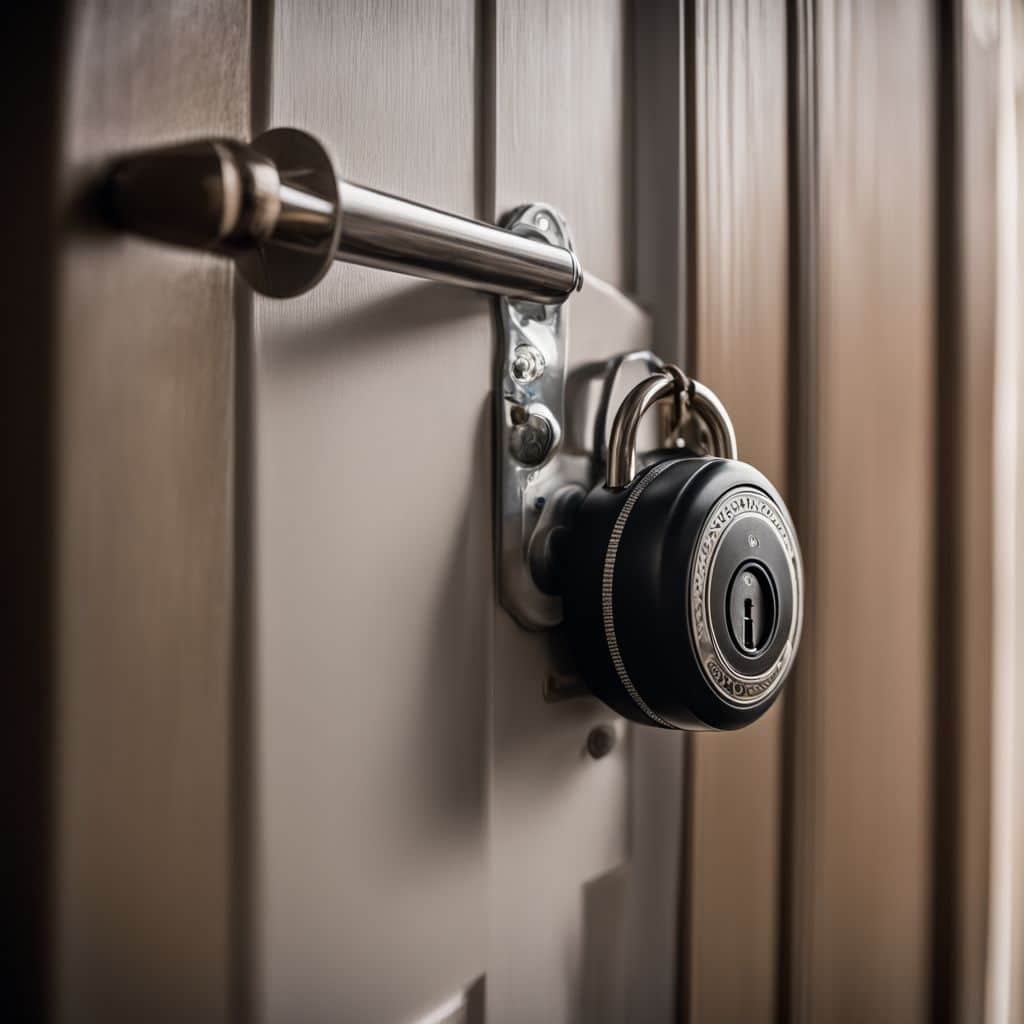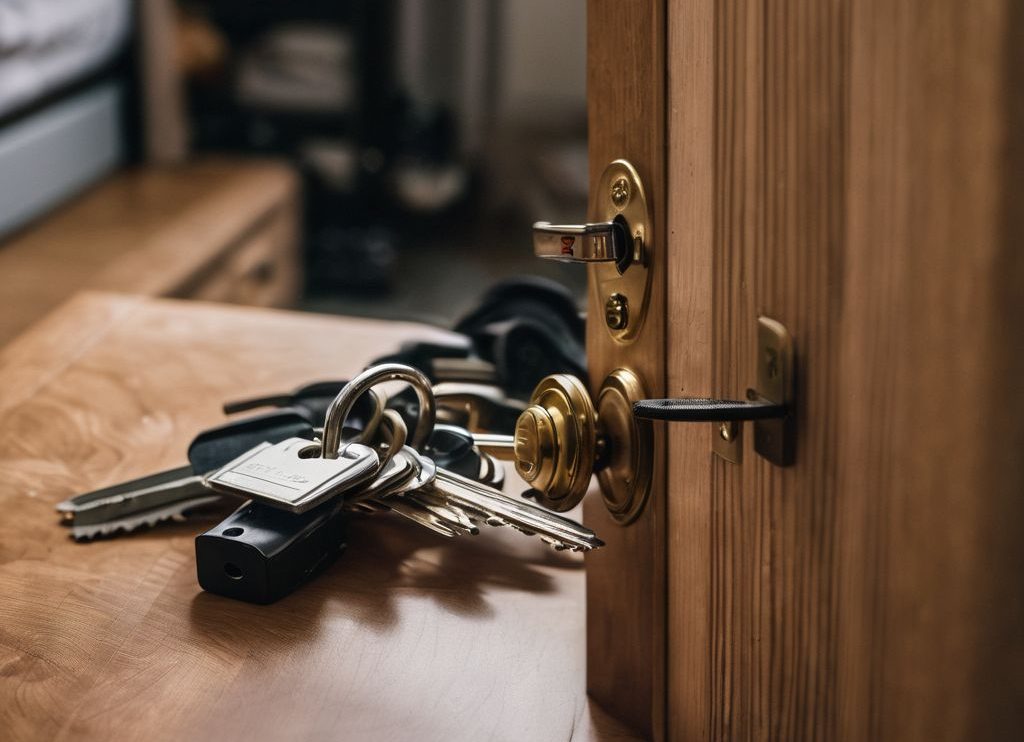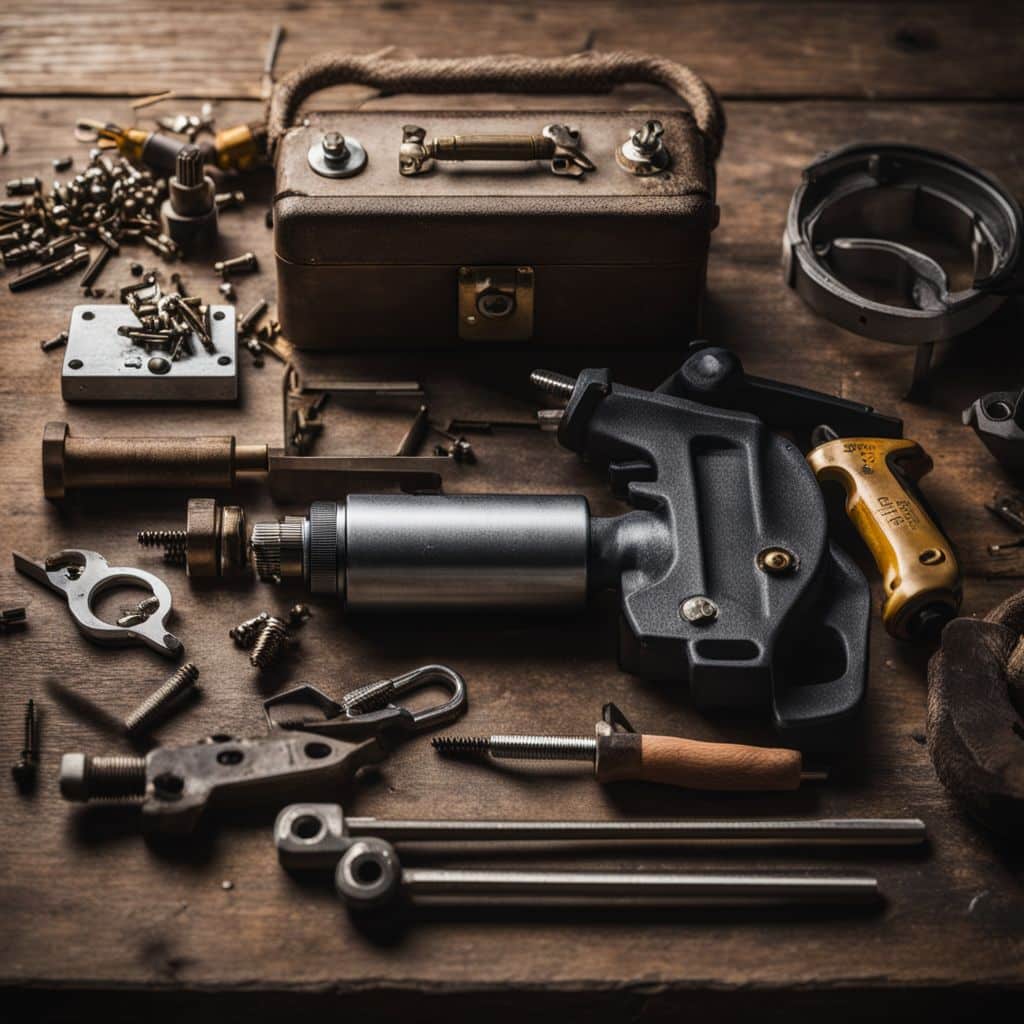You’ve found your bedroom door ajar one too many times, and the need for privacy can’t be overstated. Statistics show that unauthorized access within homes is not just unsettling; it’s also a common concern among roommates and family members.
This article guides you through crafting a simple yet effective homemade lock—giving you control over your personal space without breaking the bank. Get ready to secure peace of mind in just a few steps!
Understanding the Need for a Homemade Lock

Sometimes, your need for privacy or security calls for a quick and reliable solution. A homemade lock serves exactly that purpose – whether it’s adding an extra layer of protection to your bedroom door or keeping curious siblings at bay.
It’s easy to dismiss the effectiveness of a DIY approach, but in several cases, constructing your own lock from common household items not only saves money but also grants immediate control over your personal space.
Creating this temporary solution can be particularly useful if you’re staying in rental accommodation where altering the door frame isn’t permissible, or if you find yourself dealing with a broken lock and need a fast fix.
These locks are also beneficial as additional security while traveling, giving peace of mind when hotel room doors feel less than secure. With simple tools and materials often found at home or at local hardware stores, crafting a durable locking mechanism becomes an achievable task without needing advanced skills or expensive equipment.

Materials Needed for a Homemade Lock
These materials are essential for creating your homemade lock for your bedroom door.
Latch or bolt
Choosing the right latch or bolt is crucial for your homemade lock project. For a bedroom door, a sturdy bolt provides extra security, making it the best option if you’re aiming for something more permanent than a simple wedge.
Latches offer easier installation and are ideal if you prefer a simpler locking mechanism that’s still effective.
Ensure your latch or bolt fits snugly into the latch hole on the door frame to avoid any wiggle room. This fit is essential for maintaining the integrity of your lock and ensuring it works efficiently every time.
A well-fitted bolt combined with strong screws can withstand pressure and offers reliable protection against intruders, giving you peace of mind whether you’re in deep sleep or away from home.
Screws
Screws hold the foundation of your homemade lock firmly in place, preventing any unwanted entry into your private space. Opting for sturdy screws is crucial because they secure both the latch or bolt and the supporting plate to your bedroom door, ensuring a robust barrier.
You’ll want to select screws that are long enough to anchor deeply within the door material but not so long that they pierce through to the other side.
Fasten each screw tightly with a screwdriver or drill, making sure they sink flush against the surface for a clean finish. This detail matters for both function and appearance—loose screws could compromise security, while protruding heads might snag on clothing or cause injury.
Once everything is secured, you’re ready to move on to grabbing that drill which will help you carve out just the right spots for your new lock installation.
Drill
To create a homemade lock, you will need a drill to make precise holes for the latch and screws. Start by marking the placement of the lock and then carefully drill holes according to those markings.
This step is crucial in ensuring that the latch and plate are securely attached to the door. Use the keywords “homemade lock,” “drill,” “precise holes,” and “securely attached” as you guide readers through this essential process.
Once you have completed drilling the necessary holes, move on to attaching the latch and plate following our next steps.
Wood or metal plate
Attach the latch and plate using screws. Make sure the plate is sturdy and securely fastened to the door frame. The material of the plate, whether wood or metal, should be strong enough to withstand pressure when the lock is engaged.
Once you have attached the latch and plate, test the lock for functionality by using it several times. If necessary, make any adjustments required to ensure smooth operation. A properly installed and functional homemade lock provides an added layer of security for your bedroom door.
Next Steps: Testing and Adjusting the Homemade Lock
Steps to Create a Homemade Lock for Bedroom Door

Measure and mark the placement of the lock on your bedroom door using a permanent marker for accuracy. Then, carefully drill holes for the latch and screws, making sure to follow the manufacturer’s instructions.
Once the holes are in place, attach the latch and plate securely to ensure proper functionality of your homemade lock.

1. Measure and mark the placement of the lock
Before proceeding, ensure you have the necessary tools and materials to measure and mark the placement of your homemade lock. Using a ruler or tape measure, determine the proper position for the lock on the door frame.
Once measured accurately, use a pencil to mark where you will drill holes for the latch and screws. Ensure these marks are aligned with precision before moving to the next step.
After measuring, marking, and confirming their accuracy, you can begin drilling holes for both the latch and screws according to your markings. This meticulous approach ensures that your homemade lock fits securely in place without any misalignment issues during installation.
2. Drill holes for the latch and screws
Measure and mark the placement of the lock on your bedroom door. Use a drill to create holes for the latch and screws. Securely attach the latch and plate, ensuring a snug fit for proper functionality.
Test the lock to ensure it operates smoothly, making any adjustments as needed.
With the latch and screws in place, proceed to test their effectiveness before moving on to securing the next components of your homemade lock system.
3. Attach the latch and plate
Once the holes are drilled, attach the latch to the door frame using screws and a screwdriver. Ensure that it is aligned properly with the corresponding hole in the door itself. Next, position the metal or wood plate against the latch and fasten it securely in place with more screws.
Finally, test your homemade lock by opening and closing the door to ensure that it latches securely. If any adjustments are necessary, make them before considering your DIY lock complete.
Testing and Adjusting the Homemade Lock
Once the latch and plate are attached, test the homemade lock for functionality by opening and closing the door. Make any necessary adjustments to ensure that the lock operates smoothly and securely.
4. Test the lock for functionality
Test the homemade lock by closing the door and attempting to open it from the outside. Ensure that the latch or bolt securely holds the door in place and does not easily slide out of position.
Try opening the door with gentle pressure to check for any weaknesses in the lock’s installation.
After testing, make any necessary adjustments to improve its functionality. This may involve tightening screws, realigning components, or reinforcing weak areas to enhance the overall security provided by your homemade lock.
5. Make any necessary adjustments
After testing the homemade lock, assess its functionality by attempting to open the door from both inside and outside. Should you encounter any issues, such as difficulty latching or unlatching, uneven alignment, or resistance when opening or closing the door, consider making adjustments.
You might need to reposition the latch or plate, tighten screws, or make slight modifications to ensure smooth operation. Making these necessary adjustments will guarantee that your homemade lock functions effectively and provides the security and peace of mind you desire.
If you notice any gaps between the latch and strike plate when in a locked position, take measures to eliminate them for a snug fit. Additionally, confirm that no parts obstruct the proper closure of the door.
Conclusion
Securing your bedroom door with a homemade lock is a simple and effective way to enhance privacy and security. By gathering the necessary materials and carefully following the steps provided, you can create a reliable lock tailored to your specific needs.
Testing and adjusting the lock ensures that it functions perfectly, providing peace of mind for you and your family. With this practical knowledge in hand, you have the ability to take proactive measures to safeguard your personal space without having to rely on commercial solutions.
Related: How to Open a Window from the Outside

